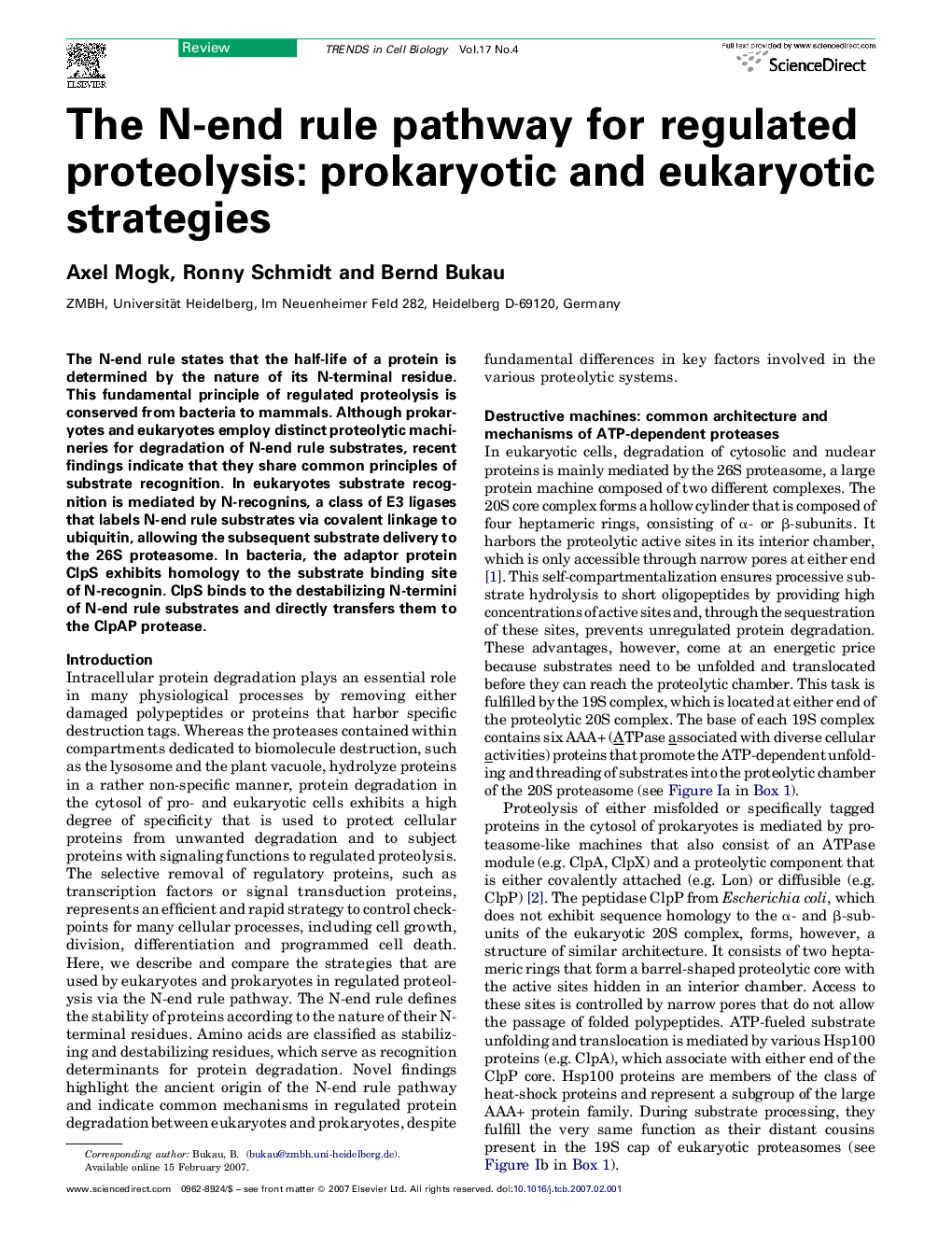| Article ID | Journal | Published Year | Pages | File Type |
|---|---|---|---|---|
| 2205069 | Trends in Cell Biology | 2007 | 8 Pages |
The N-end rule states that the half-life of a protein is determined by the nature of its N-terminal residue. This fundamental principle of regulated proteolysis is conserved from bacteria to mammals. Although prokaryotes and eukaryotes employ distinct proteolytic machineries for degradation of N-end rule substrates, recent findings indicate that they share common principles of substrate recognition. In eukaryotes substrate recognition is mediated by N-recognins, a class of E3 ligases that labels N-end rule substrates via covalent linkage to ubiquitin, allowing the subsequent substrate delivery to the 26S proteasome. In bacteria, the adaptor protein ClpS exhibits homology to the substrate binding site of N-recognin. ClpS binds to the destabilizing N-termini of N-end rule substrates and directly transfers them to the ClpAP protease.
